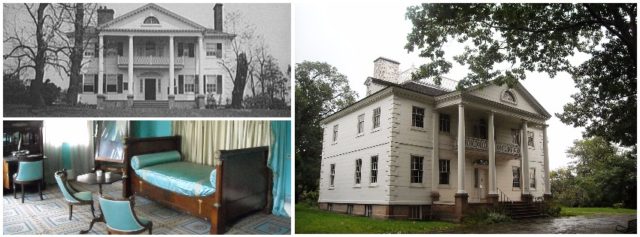
The Morris–Jumel Mansion located at 65 Jumel Terrace in Roger Morris Park in the Washington Heights neighborhood of Manhattan, New York City, is the oldest house in the borough. It was built in 1765 by Roger Morris, a British military officer and served as a headquarters for both sides in the American Revolution.
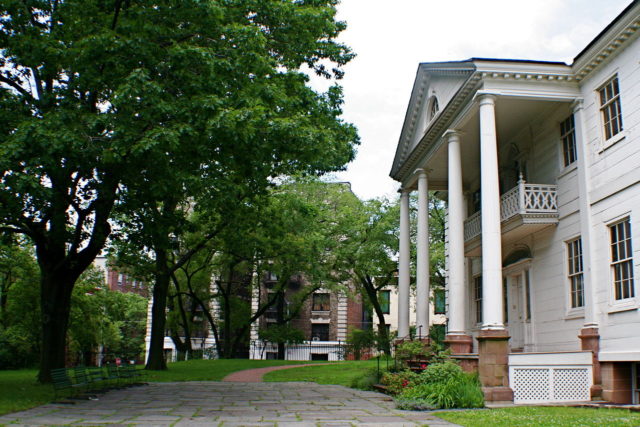
The mansion is located on the top of a ridge, Coogan’s Bluff, from which lower Manhattan, the Hudson River including the Palisades, the Bronx, Westchester, the Long Island Sound and the Harlem River were once visible.It is located in Roger Morris Park, a New York City park within the boundaries of the Jumel Terrace Historic District, but is landmarked separately from the historic district.
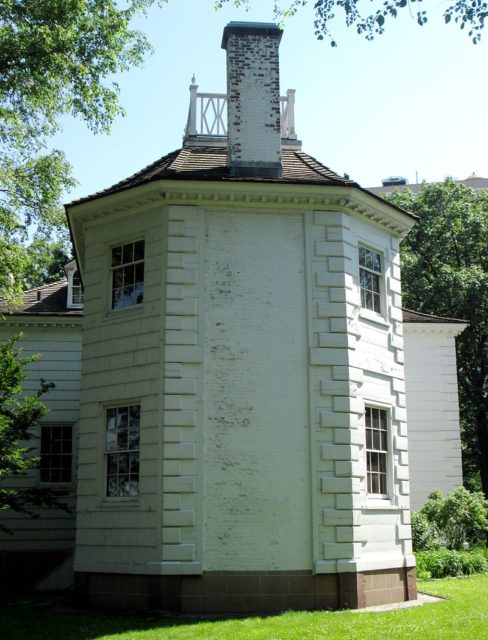
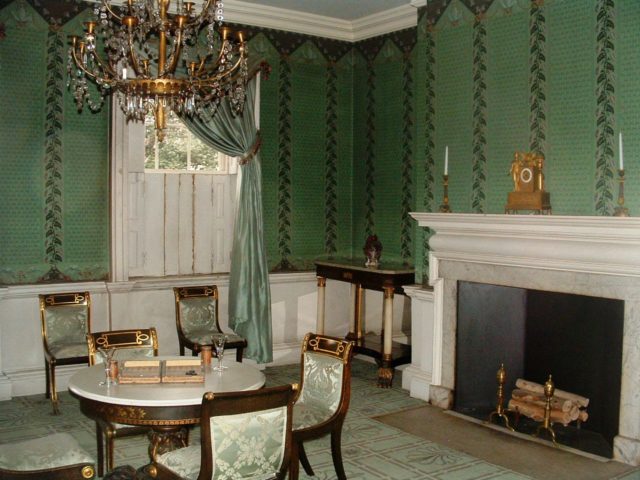
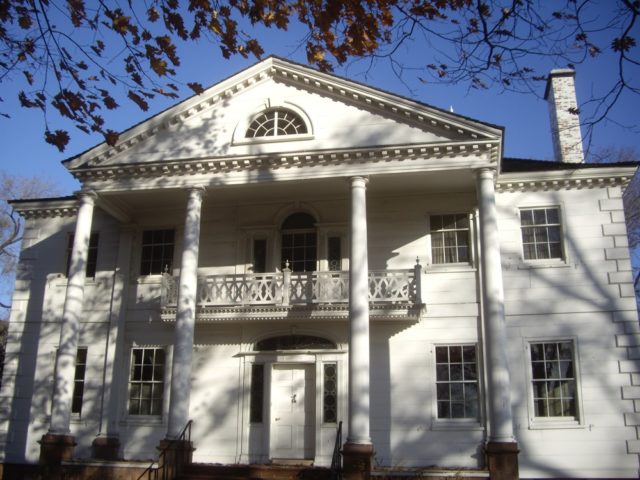
Roger Morris, a British military officer who was serving as a member of the Executive Council of the Province of New York, built the house in 1765 for himself and his American-born wife, Mary Philipse Morris; they lived in it for ten years, from 1765 until 1775, when the American Revolution began. As British loyalists, Morris went to England at the start of the war, while his wife and family went to stay at the Philipse estate in Yonkers.Morris returned in 1777, after the city had been captured by the British, and became the Inspector of the Claims of Refugees until 1783, when he and his family left for England after the success of the Revolution.
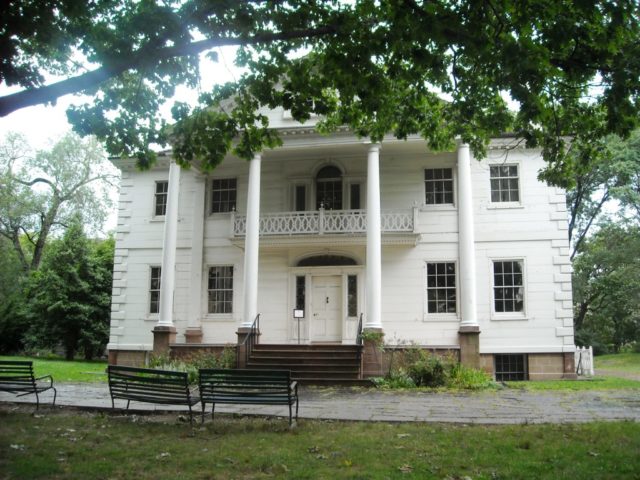
Between September 14 and October 20, 1776, General George Washington used the mansion as his temporary headquarters after his army was forced to evacuate Brooklyn Heights following their loss to the British Army under the command of General William Howe in the Battle of Long Island.
This house is one of the major remaining landmarks of Battle of Harlem Heights, after which it became the headquarters of British Lieutenant General Sir Henry Clinton, and theHessian commander Baron Wilhelm von Knyphausen.
Because the Morrises were Loyalists, the house was confiscated by the Commissioners of Forfeiture at the end of the Revolution, after which it served as a farmhouse and a tavern, “Calumet Hall”, a popular stop along the Albany Post Road.
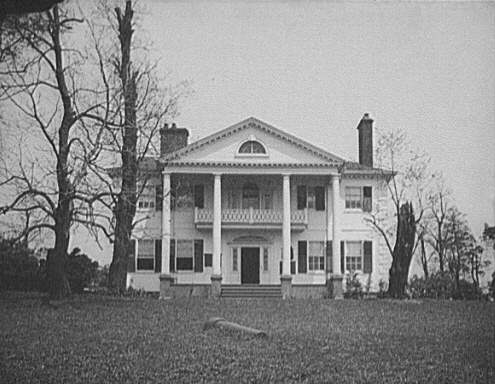
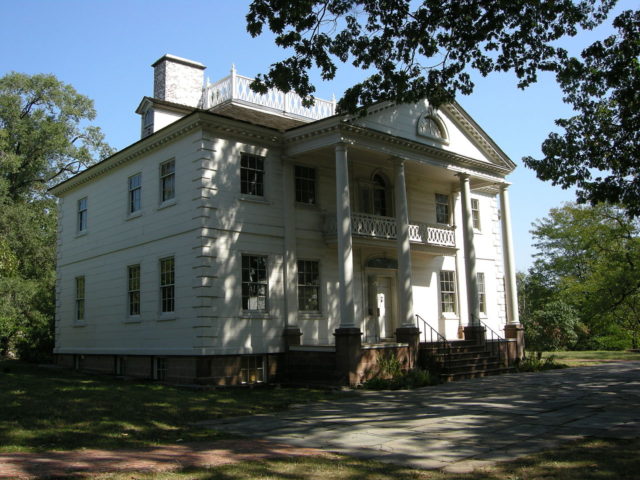
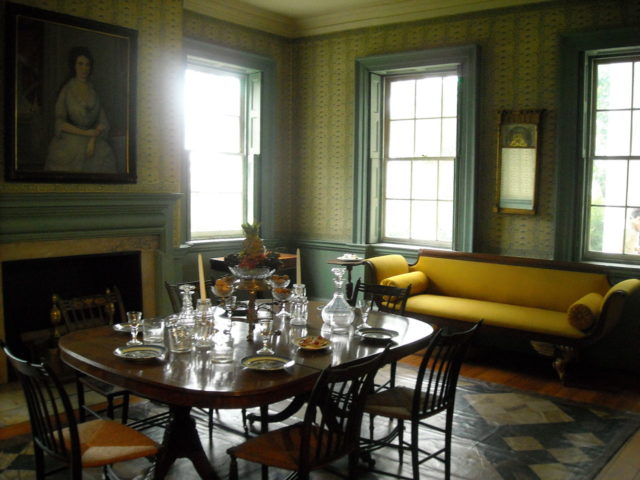
The mansion was bought in 1810 by Stephen Jumel, a rich French merchant who had immigrated to the United States, as a home for himself and his wife, and former mistress, Eliza Bowen Jumel, along with their adopted Mary Bowen, who was thought to be the daughter of Eliza’s stepsister.Anxious to be accepted into New York society, the Jumels remodeled the house, adding the Federal style entrance, and redecorated the interior in the Empire style. Because they were not accepted socially in New York, the Jumels went to France in 1815, although Eliza returned from 1817–1821. She returned for good in 1826 with Stephen Jumel’s power of attorney, and he returned in 1828.
After Stephen’s death in 1832 from injuries he received in a carriage accident,Eliza, who was now one of the wealthiest women in New York City,married the controversial ex-vice president Aaron Burr in the front parlor of the house; she filed for divorce in 1834, which was granted in 1836, shortly before his death. Eliza then divided her time betweenSaratoga, New York, Hoboken, New Jersey and lower Manhattan. Her step-daughter’s family lived with her in the mansion until 1862; Eliza Jumel died in 1865 – in her later years she became very eccentric, if not insane.
In 1882, the Jumel heirs broke up the 115 acres (0.47 km2) of the estate into 1058 lots, upon which numerous row houses were built, some of which today make up the Jumel Terrace Historic District.
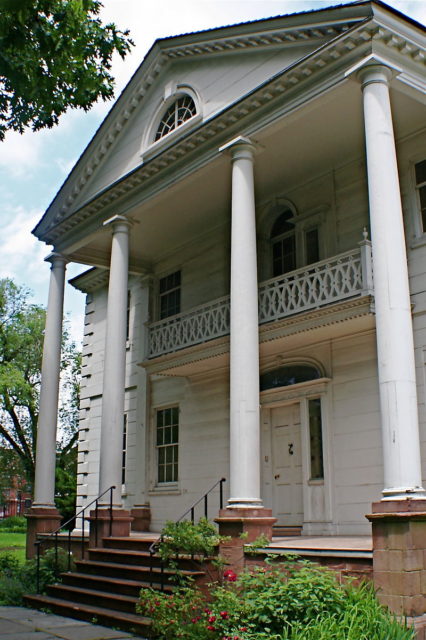
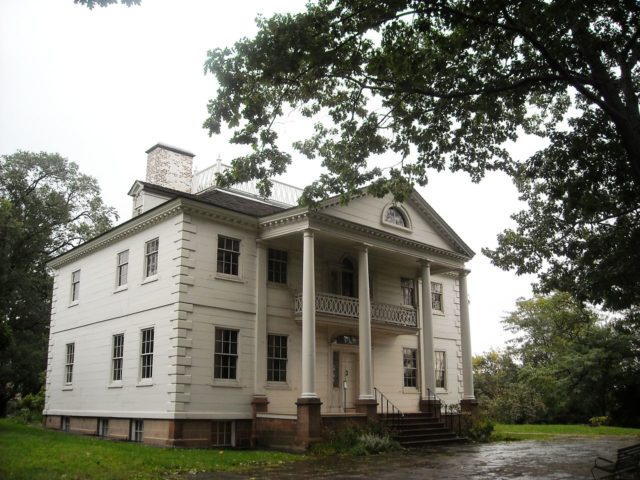
The mansion is sometimes visible in old pictures of the ballfield that show Coogan’s Bluff. Today the Polo Grounds Towers stand where the stadium once was.
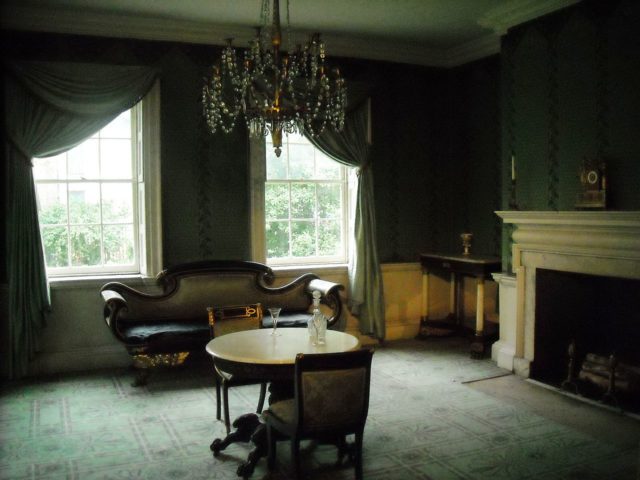
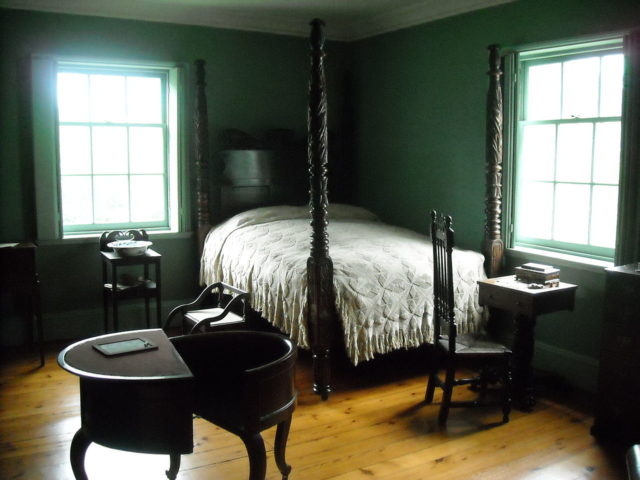
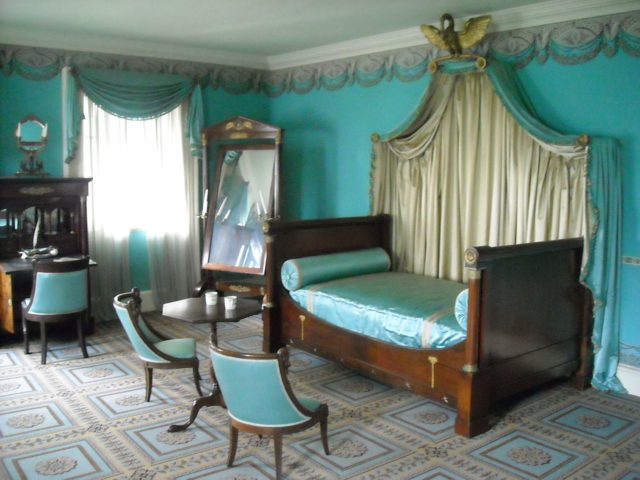
The house itself was purchased by New York City in 1903from the owners at the time, the Earles, with the help of the Daughters of the American Revolution, and converted into a museum run by the Washington Headquarters Association;The museum opened in 1904,and was renovated and refurnished in 1945.The house is owned by the Department of Parks and Recreation, and is a member of the Historic House Trust.
